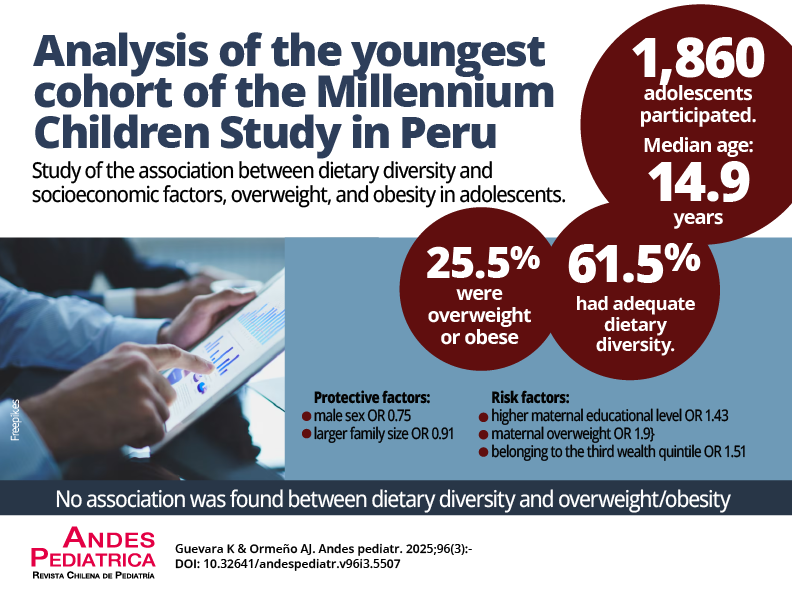Abstract
In recent years, childhood overweight and obesity have increased, being genetics, lack of physical activity, and unhealthy dietary habits the main risk factors.
Objective: To evaluate the association between dietary diversity and socioeconomic factors with overweight and obesity in adolescents.
Patients and Method: Cross-sectional evaluation of the fifth round of the younger cohort of the Young Lives study in Peru. Overweight, obesity, dietary diversity at home, socioeconomic factors, birth weight, breastfeeding history, and maternal anthropometry were evaluated. A multivariate logistic regression analysis was performed to identify the crude and adjusted association between the variables of interest, with their odds ratios and their respective 95% confidence intervals.
Results: 1,860 adolescents (50.5% male) were included, with a median age of 14.9 years. 25.5% were overweight or obese and 61.5% had adequate dietary diversity. Protective factors for overweight and obesity were male sex (OR = 0.75; 95% CI: 0.59-0.95) and larger family size (OR = 0.91; 95% CI: 0.85- 0.98), while risk factors were higher maternal educational level (OR = 1.43; 95% CI: 1.02-2.02), maternal overweight (OR = 1.90; 95% CI: 1.48-2.46), and belonging to the third wealth quintile (OR = 1.51; 95% CI: 1.01-2.26). No association was found between dietary diversity and overweight or obesity (OR = 0.89; 95% CI: 0.70-1.14).
Conclusions: No association was found between dietary diversity and overweight and obesity in the participating adolescents. Risk factors included a higher maternal educational level, maternal overweight, and belonging to the third wealth quintile, while male sex and larger family size were protective factors.

This work is licensed under a Creative Commons Attribution 4.0 International License.
Copyright (c) 2025 Revista Chilena de Pediatría






